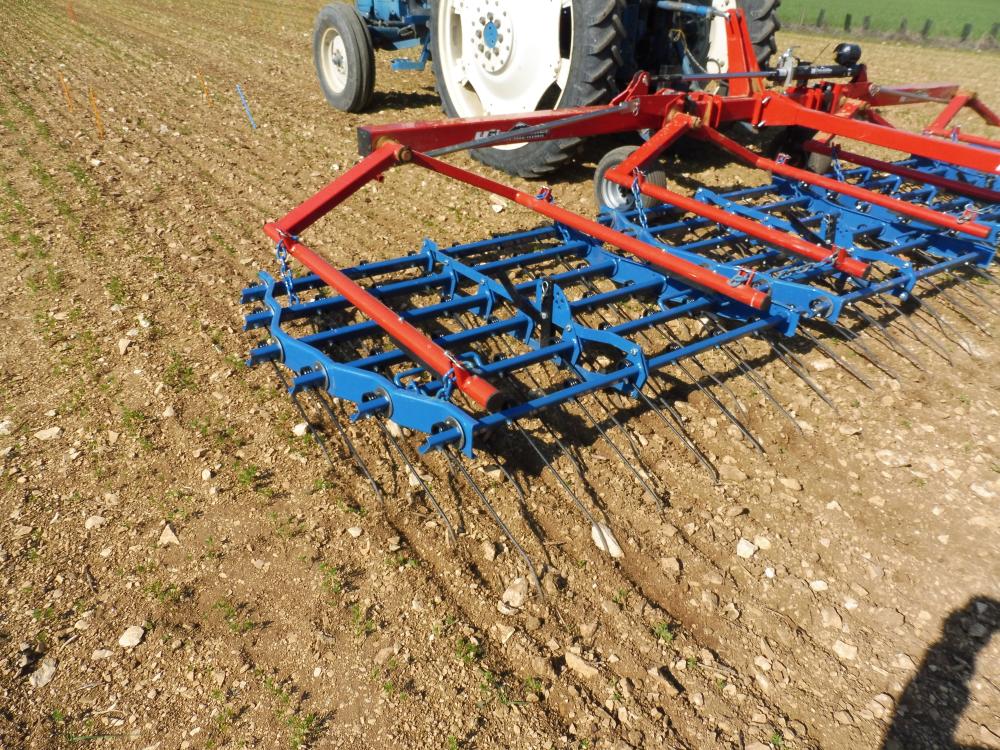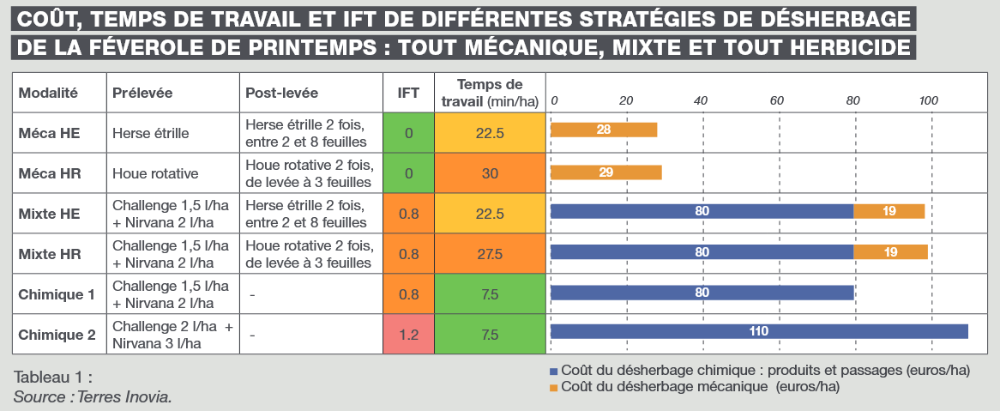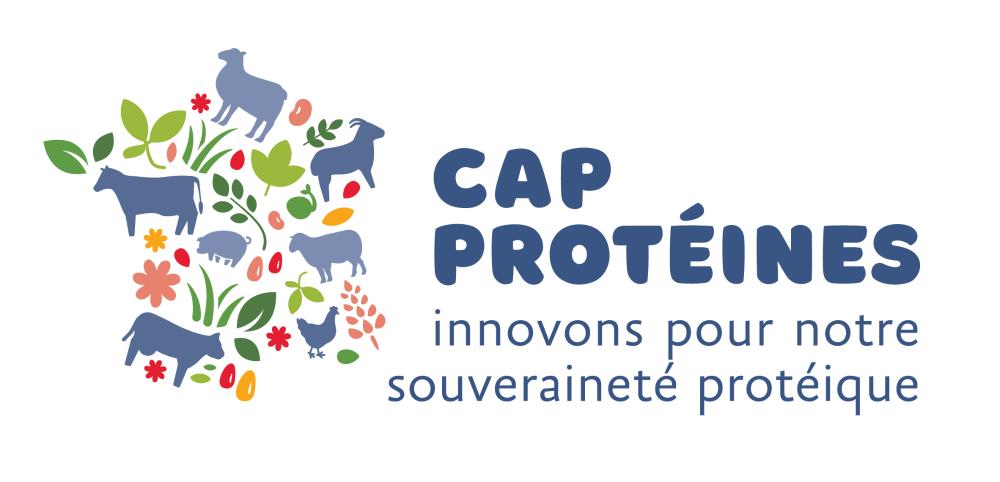Mixed weed control: an interesting solution for seed legumes
Mixed weed control: an interesting solution for seed legumes
Mechanical interventions - whether or not combined with herbicides - to control weed infestation in plots are more easily integrated into spring crops. Terres Inovia's aim is to validate effective, low-cost strategies that minimise the treatment frequency index.

In spring pea and faba bean, Terres Inovia trials have shown that well-placed mechanical weeding reduces the use of herbicides for equivalent effectiveness.
Copyright: F. Vuillemin, Terres Inovia
Winter pea and faba bean are grown over a long period in cropping successions. These crops can therefore be subject to a variety of weed pressures, whether in winter or spring. On the other hand, for varieties planted in the spring, weed control in the plots focuses on the spring flora. Mechanical weeding is used more on spring crops, in order to have access to the right weather windows.
Given the increasingly strict regulatory context and the objective of reducing the use of inputs, Terres Inovia is working to support growers with mixed or mechanical weed control solutions.
Mixed farming proves its worth thanks to Cap Protéines
On spring beans, the results of trials carried out over 3 years between 2016 and 2018 show that weed control with the Challenge 600 + Nirvana S combination in pre-emergence at modulated doses (1.5 l/ha and 2 l/ha respectively), supplemented by one or two passes of the currycomb harrow between the "2-leaf" and "7-leaf" stages of the crop, is very effective, close to 100%, on the flora present: wild buckwheat, black nightshade, lamb's-quarters, etc.
Since mixed weed control with a modulated herbicide is just as effective as pre-emergence chemical weed control alone, even at full dose, in this case the currycomb harrow saves €30/ha on herbicide costs and 0.4 points on the treatment frequency index (IFT), for an equivalent and satisfactory result (table 1).

Extract from the Arvalis & Terres Inovia infos article available at the bottom of the article.
A more recent trial, this time with hoeing, carried out as part of the Cap Protéines programme in 2022, showed that on wild buckwheat, the mixed method with a pre-emergence application of Prowl 400 at 2, 5 l/ha pre-emergence treatment of spring bean followed by hoeing at 4-5 leaves was satisfactorily effective (90%) and equivalent to the chemical reference method with a single pre-emergence treatment reinforced with Nirvana S (3 l/ha) + Centium CS (0.15 l/ha). This mixed strategy is a winner in this trial: it saves €46/ha on herbicide costs and 0.35 IFT points, for equivalent and satisfactory efficacy.
In both cases (with curry harrow or with hoe), the mixed methods clearly demonstrate the benefits of chemical-mechanical complementarity, since the same pre-emergence treatment alone is less effective and mechanical treatment alone is very inadequate.
On spring peas, however, mechanical weed control is trickier because of the plant's tendrils, which reduce the windows of intervention as they can get caught on the tools.
Nevertheless, a recent trial carried out as part of Cap Protéines in 2022 shows some interesting trends. The effectiveness of weed control on wild buckwheat and fumitory is relatively satisfactory for the model with a post-emergence harrowing at 4-5 leaves of the pea, followed by an application at 5 leaves of the pea of the mixture Challenge 600 (0.5 l/ha) + Basagran (0.3 kg/ha).
In general, this shows that mechanical weeding prior to this treatment in the mixed modalities provides a small benefit on broadleaf flora, particularly in situations where the herbicide treatment is carried out in dry conditions. Trials on spring peas should be continued in order to strengthen the references.
Lentils: a dry spring favours good results
Herbicide solutions for lentils, chickpeas and lupins remain limited. This justifies the importance of compensating for weed control with mechanical tools.
On lentil, a trial carried out in 2022 as part of the Cap Protéines programme showed that on wild buckwheat, chickweed and sanvoa, the efficacy of mixed methods, with a combination of pre-emergence herbicides (Challenge 3 l/ha + Nirvana 1 l/ha) followed by a pass with a currycomb harrow or rototiller at 2-4 leaves, followed by a month without rain, was very good. They reach 95 to 100% and are equivalent to those of the conventional programme Challenge (3 l/ha) + Nirvana (1 l/ha) pre-emergence followed by Challenge (1 l/ha) at "4-6 leaves" (100% efficiency).
This result shows that after pre-emergence weed control, a currycomb or rotary currycomb sprayed at the "2-4 leaf" stage of the crop can perfectly well replace Challenge sprayed at a rate of 1 l/ha at the "4-6 leaf" stage. This is particularly true when the spring is dry - as was the case in this trial. This makes it possible to reduce the cost of the programme (-€25/ha in herbicide costs and -1 point in IFT) while still achieving satisfactory efficacy. These references need to be reinforced by further trials in the future.
| FIND OUT MORE/ The recommended programmes for your situation are detailed in the Terres Inovia crop guides. They are available free of charge after creating a user account on the Institute's website: www.terresinovia.fr |
Contact: F. Vuillemin, f.vuillemin@terresinovia.fr
